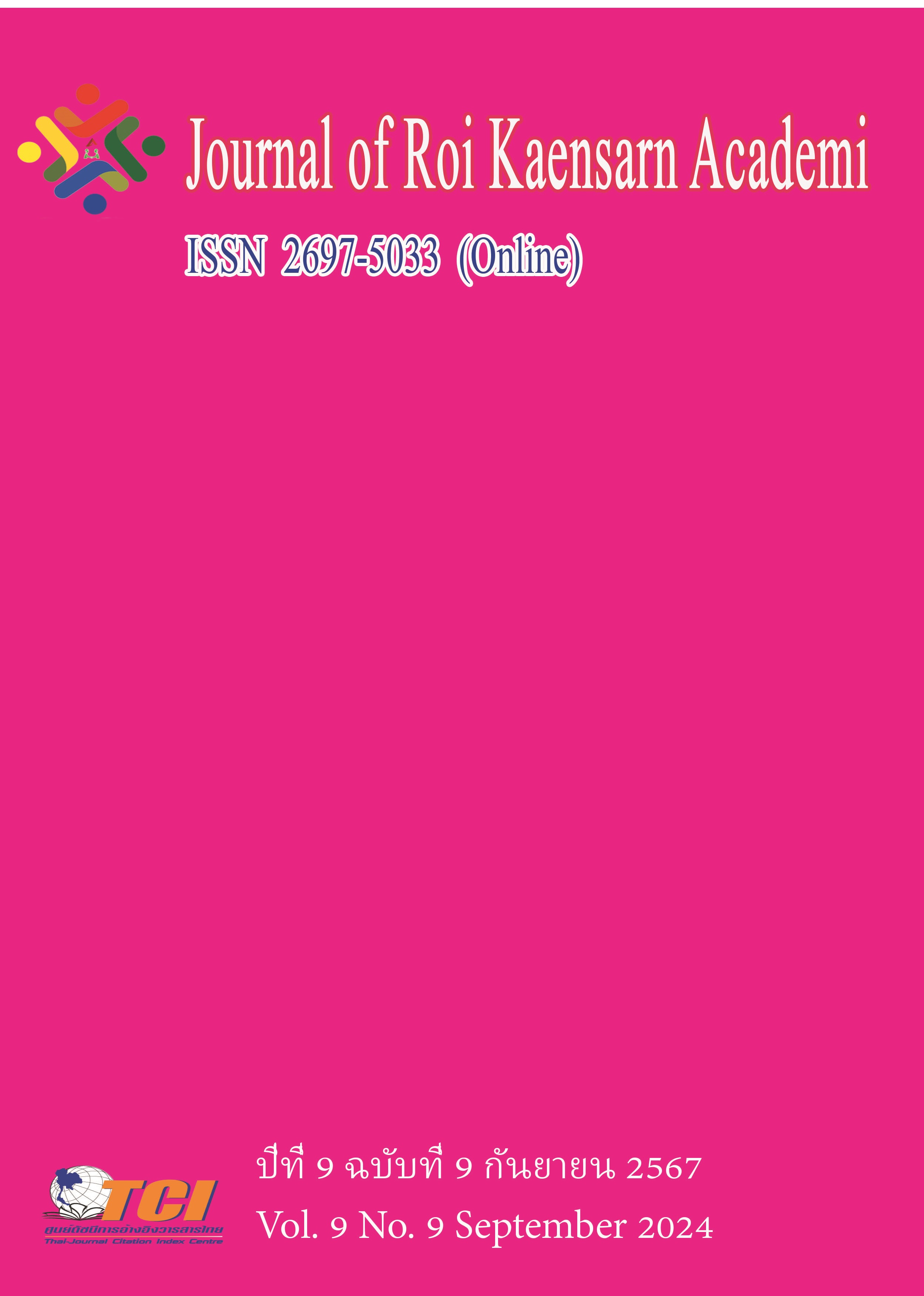The Effect of Happy Gymnastics Program on 3-6Years Old Children's Balance in Haian Foreign Language Kindergarten
Main Article Content
บทคัดย่อ
Balance ability is one of the most basic motor skills, representing the basic physical quality of human beings, it plays a very important role in our future study, work, and life. The content of happy gymnastics includes strength, speed, flexibility, sensitivity, endurance and other aspects of training, which is more in line with children's psychological and physical development. The objectives of this research are: compare the effect of balance training on balance in children aged 3-6 years old between the experimental group using the Happy Gymnastics Program and the control group using the Traditional Gymnastics Program. Research sample: 60 students from primary class (3-4 years old), secondary class (4-5 years old) and senior class (5-6 years old) of Haian Foreign Language Kindergarten were selected as the experimental group and the control group respectively. The experimental class carried out the 12-week happy gymnastics intervention experiment. Before and after the intervention, the United States foot scan balance tester instrument system was used to conduct eye-opening test of both feet, closed-eye test of both feet, eye-opening test of one foot and closed-eye test of one foot.
Results: 1. After the experimental intervention of happy gymnastics, the static balance ability of children in the experimental class with opening or closed eyes respectively reached the most significant level (p<0.01), a normal significant level (p<0.05) and a small significant level (p<0.1), while there was no statistical significance in the control class (p>0.1).
2. After the experimental intervention of happy gymnastics, the children's static eye opening and closed eyes balance ability of one foot in the experimental class was more significantly improved than that of both feet, while there was no statistical significance in the control class (p>0.1).
Conclude the basic movements of happy gymnastics: crawling, running, jumping tumbling exercises, balance exercises, and physical exercises have obvious effects on children's balance ability.
Article Details
เอกสารอ้างอิง
Jiang Guiping, JI Zhongqiu, Jiao Xibei, WU Shengkou, LIU Weitong. (2016). Effects of rhythmic physical activity on static balance of 3 ~ 6 year old children from the perspective of motor development [J]. Chinese Journal of Sports Medicine, 35 (09), 822-831.
Jiang Yuhang. Research on the Implementation Status of Kindergarten Based Physical Jiang Guanghe. (2015). Research on Happy Gymnastics [J]. Sports Culture Guide: 56-58 Isabelle Olivier Estelle Palluel,Vincent Nougier, Effects of postural sway on attention in infants and adults.
Liu Jia. (2015). An experimental study on the influence of movement training on the balance ability of 4-year-old children [D]. Hebei Normal University.
Ma Junjie. (2001). The influence of gymnastics Practice on the development of preschool children's balance ability [J]. Journal of Shanghai Institute of Physical Education
Sun Mengmeng.(2018) Experimental study on the influence of happy gymnastics activities on the development of basic motor skills of children in big class [D]. Shandong Normal University.
Simge Yılmaz,Berna Sicim-Sevim. (2020). The examination of the differences in the motor proficiency skills of children practising gymnastics vs. non-sportive children[J]. Early Child Development and Care,190 (9).
Wang Jiali, Yang Ning, Min Zhu, BIAN Weiwei.(2016). Effects of front roll and ball racket exercise on static balance ability of preschool children [J]. Chinese Journal of Sports Medicine,35 (07), 653-655.

